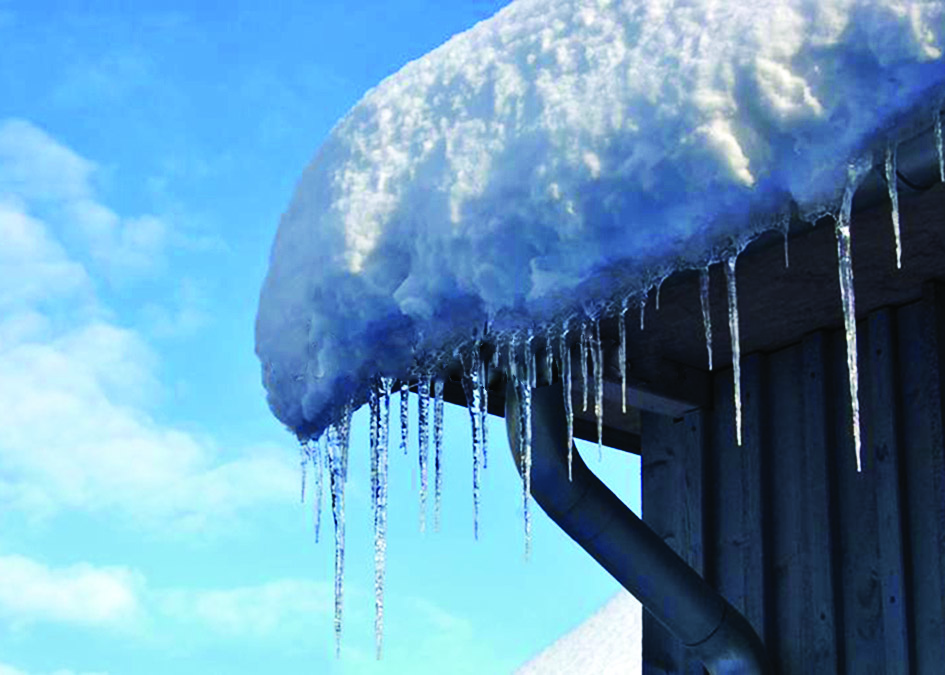
Nancy Edmonds Hanson
As the leaves turn gold and temperatures dip in autumn, homeowners feel the urge to winterize their homes — to ready their nests for the frigid challenges ahead.
But the coming of spring is just as critical a time to take stock of the state of your home, says Fargo-Moorhead home inspector Dean Foell. Now is the time to “summerize.”
“Spring sneaks up on homeowners,” the professional home inspector and owner of Dakota Air Quality reflects. “As the snow disappears and the lawn begins to green up, it’s easy to overlook how your house needs a closer look. Temperature extremes, rodents, sealed-up spaces, moisture — there can be a lot going on.
“We sort of slide into the spring … but that’s actually the time tarwhen we run into most of our issues.”
The question, of course, is how the long, cold Northern Plains winter has affected the roof and four walls that have sheltered you. Foell advises homeowners to make a routine of assessing potential issues early and taking steps to remedy them.
He suggests starting at the top. Issues that begin outside on the roof and the surrounding eaves can turn into headaches, especially in the attic. “I hope you’ve been keeping an eye on your roof vents,” he says. “If they’ve been covered and blocked by snow, the attic cannot breathe.” That can lead to a big build-up of moisture, frosty in the cold, that melts and seeps when the weather turns sunny and warm.. That often-subtle seepage can lead to water stains on the ceiling below.
And have you heard the pitter patter of tiny paws overhead? Bitter winter cold drives four-footed critters to seek a warm haven, and perhaps to gnaw on wiring or whatever’s stored there. If those four-legged critters — squirrels? — have invaded the space under your roof, you have two choices, Foell says: If you’re the brave sort, invest in a live trap. Otherwise, call a professional exterminator.
Winter’s potential damage, of course, isn’t limited to what’s under the roof. Removing built-up snowdrifts from the roof, while a good idea in many cases, may have damaged the shingles underneath. Another risk is ice dams that build up in the gutters during freeze-and-thaw cycles. “If you see that happening, you may want to have the situation evaluated and possibly get it repaired right way,” Foell suggests. “Water can back up under the shingles and seep inside, eventually damaging the ceiling.” He recommends that all but the most intrepid home handymen call a contractor or roofer.
He adds a reminder: Don’t forget to make sure your gutters are clean (a task best done last fall), and reattach the gutter spouts.
Warm days will return, probably sooner than you think. That means the air conditioner, neglected for the past six months or so, needs a good sprucing up. If there’s a problem with the unit, call an HVAC company. Otherwise, though, homeowners can do routine clean-ups themselves. “You can clean it with a garden hose,” he says, adding, “but just a regular stream. Don’t use a pressure washer!” Hose off the outside coils well. Being sure to look for any rodent damage to the line insulation. “Mice and bunnies do like to gnaw,” he hints.
As the snow melts, walk all the way around your house, keeping an eye out for ponding water along the foundation. If you spot it, this spring is the time to amend the landscape to encourage it to drain away from the concrete — again, to prevent seepage that will eventually turn into trouble.
Indoors, too, the time is right to check a few potential issues. In homes with forced air, Foell advises, the ducts may need cleaning if you haven’t done it lately. “Once every three or four years is adequate unless you have trouble with allergies or have pets who shed dander,” he suggests, adding, “If you’re a big fan of fluffy towels in the bathroom, you’ll have fluffy lint.” Usually it’s adequate to remove the cover of the bathroom vent and vacuum the outside and first few inches.
One kind of duct needs more regular cleaning: The dryer. “Dryer lint is one of the most flammable things in your house,” he says. “Some people save it all year and use it to start campfires.” He recommends have those ducts cleaned once a year with a brush and wire puller. For most people, calling a professional duct cleaner may be the best course of action.
Finally, Foell offers an unexpected hint about what may be lurking in your winter-weary closet.
“You’ve probably been storing soggy coats and wet boots in your closet since the weather turned bad,” he guesses. “Depending on where your closet is located, they may be packed tight against the outer wall — not a warm, airy place they’re likely to dry out. If so, it could be like a petri dish in there. If you don’t use the clothes or closet much through summer, you know what that can mean? Mold.
“You might not notice it right away. You might not see it for five years. But if it’s in there, you can be sure it will show up over time.”
So check your attic, your dryer vent and your closet, and stroll around the outside of your house. Look up at the roof. Look down at the foundation. And, after that, get ready to enjoy your summer.

